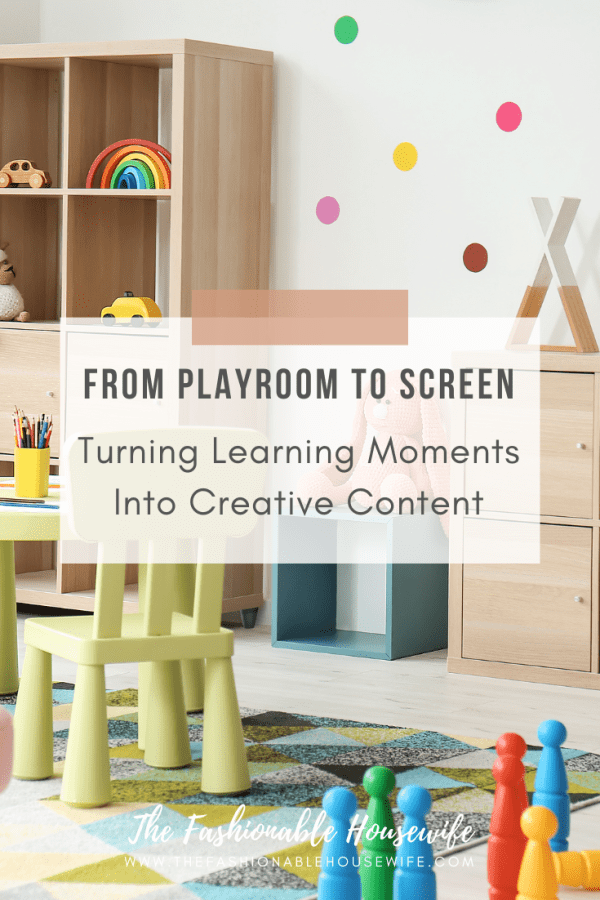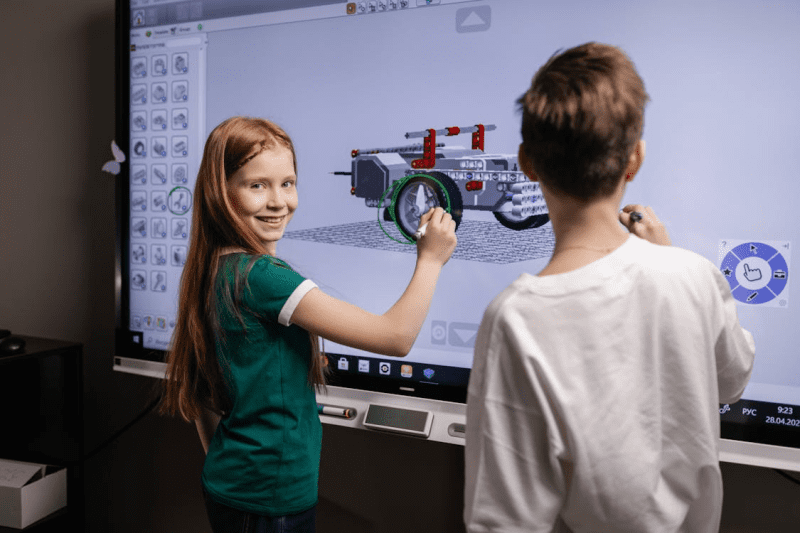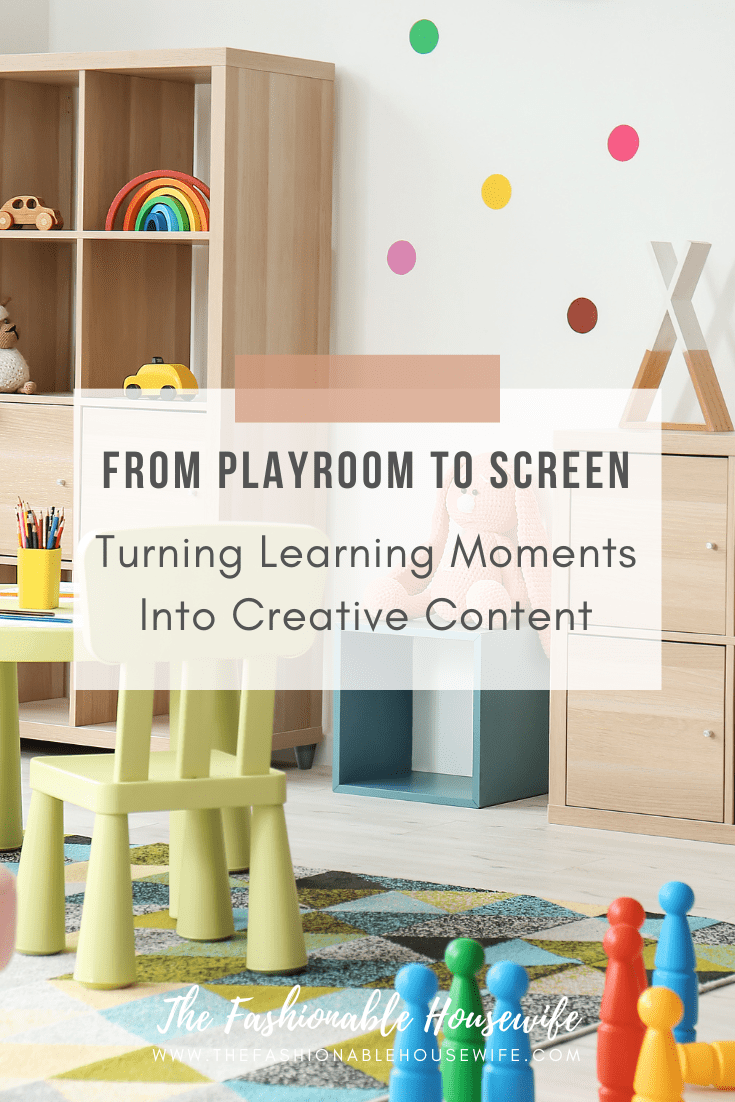From Playroom to Screen: Turning Learning Moments Into Creative Content

Learning has always been part of a child’s world, whether they’re building towers with blocks or tapping shapes on a tablet. Many parents wonder if the rise of screens means play loses its magic, but that doesn’t have to be the case. Children can still explore, ask questions, and discover new ideas as they move between the playroom and the screen.
Children’s experiences can grow richer when they learn in different ways. When parents and teachers see the value in capturing these moments, they help children build confidence and joy. Turning learning into something creative doesn’t require fancy equipment or special training—it just needs a bit of care and curiosity.
Parents often seek simple ways to make learning feel natural and enjoyable. They may wonder how to keep children engaged while also saving memories of what they’ve achieved. In this article, we’ll explore just how to do that.

Spotting Learning Moments in Everyday Play
Many learning moments happen during the simplest parts of a child’s day. Watching a child sort toys by colour, build with blocks, or tell stories shows how much they learn through play. These moments help them practise thinking, planning, and expressing ideas.
To make learning more fun, parents bring in vtech toys to guide children toward early skills. These toys often include buttons, lights, and sounds that make counting and spelling feel like a game. Used alongside other toys, they can keep children interested without making activities feel forced.
Paying attention to a child’s reactions makes it easier to notice when something is special. A child might try the same puzzle again or sing the same song because it holds importance for them. Noticing this effort allows parents and teachers to encourage the child and build on their curiosity.
Minor signs—such as repeated questions or focused attention—are often clues to a child’s interests or curiosity. It helps to jot down quick notes or keep track of these moments so they don’t get forgotten on a busy day. When adults show interest in what children care about, it helps children feel understood and valued.
Capturing and Recording Special Moments
Taking a photo or video can be a simple way to capture a learning moment and keep it fresh. A short clip can show how a child completes a challenging project or learns new words. Some parents also use audio recordings to save songs or early attempts at reading aloud.
Many families choose to set aside a little time each week to organise what they’ve collected. Storing files in clearly named folders on a phone or tablet helps everyone find them easily later. Adding a date or a short note about what was happening makes these memories clearer over time.
Including children in this process often gives them a sense of pride. Asking them which pictures to save or what to call a folder teaches them to take an active role in managing their work. Children can also help decorate covers or pick colours for labels, which builds a sense of ownership.
If parents work together with teachers, they can share recordings to show progress and help plan new activities. This communication supports children’s development and keeps everyone involved. Having a shared record also helps track improvements in confidence and skills over time.
Transforming Moments Into Creative Digital Content
Families don’t need special programs to turn memories into simple projects. Free apps or built-in tools on tablets can help create slideshows, digital books, or even short movies. These projects demonstrate to children how much they’ve learned and provide them with something they can enjoy repeatedly.
Parents often find that adding short captions or labels keeps children interested. A sentence explaining what the child was doing or a word they learned makes the content easier to understand. It also provides children with a way to connect words and images, which helps build their language skills.
Children can help pick the order of photos or choose background colours and music. This teamwork demonstrates that their ideas matter and teaches basic technology skills in a friendly manner. Even simple edits—such as cropping or adding stickers—make projects feel more personal.
Creating digital content also shows children that their hard work is valued and appreciated. It can turn an ordinary day into a memory they’re excited to share. As children grow older, they often enjoy seeing how far they’ve come, which helps build their self-esteem.
Keeping Balance Between Screens and Hands-On Play
Screens can be valuable tools, but they shouldn’t replace building, drawing, or exploring outside. A balance between digital and hands-on play helps children use their imagination and develop physical skills. Setting clear rules about screen time helps maintain steady routines.
Parents often find it helpful to plan time for both kinds of activities. An afternoon could include playing with blocks, followed by creating a slideshow about what was built. These moments demonstrate that screens can support—but not replace—genuine play.
Talking with children about why balance matters helps them understand how to make wise choices. Clear limits and simple explanations often work better than strict rules without context. When children learn to manage screen time early, they’re more likely to keep healthy habits later.
Sometimes, it’s helpful to have screen-free spaces in the home, such as a reading corner or a craft table. These areas remind children there’s always something fun to do away from devices. Blending different kinds of play keeps learning dynamic and enjoyable.
Final Words
Turning learning moments into creative content doesn’t have to feel like a chore. With a bit of planning and simple tools, parents and teachers can help children see how much they’ve grown. Combining playroom experiences with screens makes learning feel fresh and meaningful. Over time, these small efforts create memories that children will treasure.

